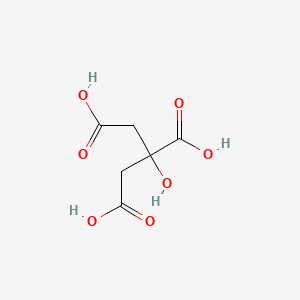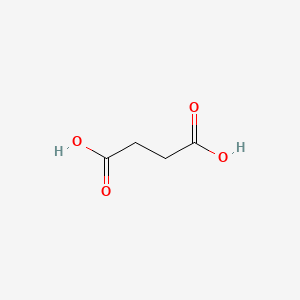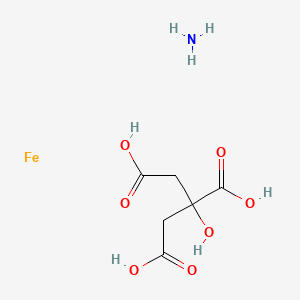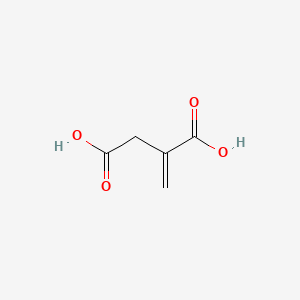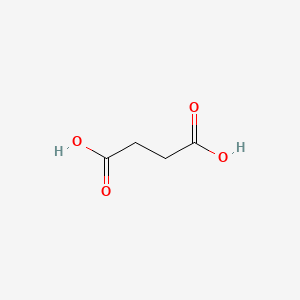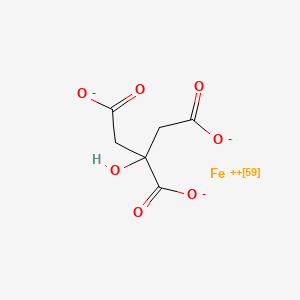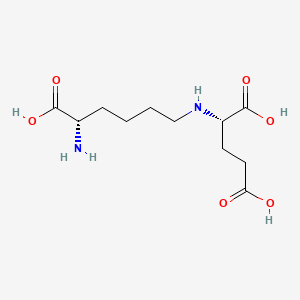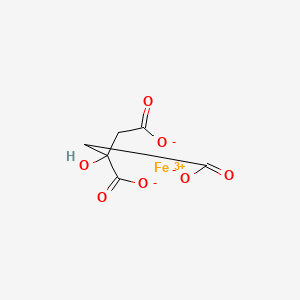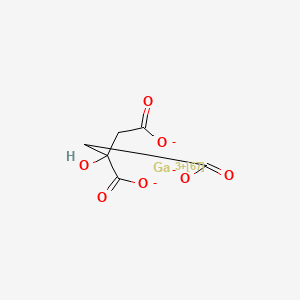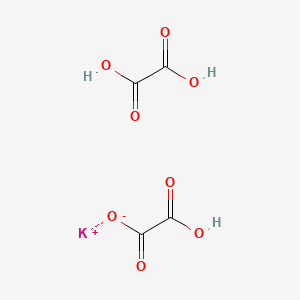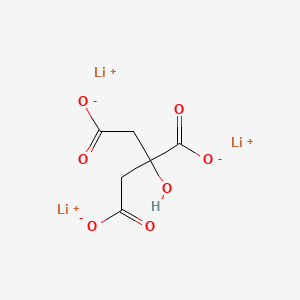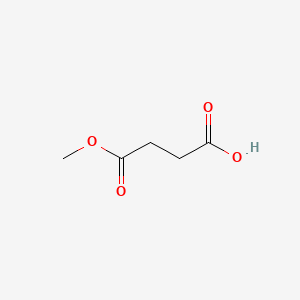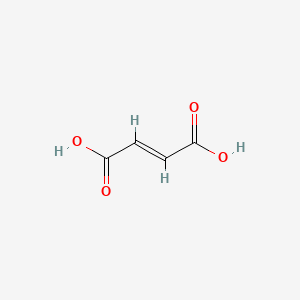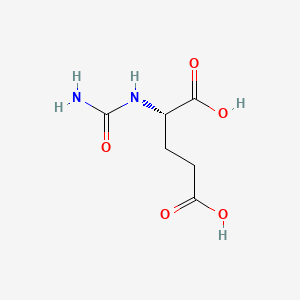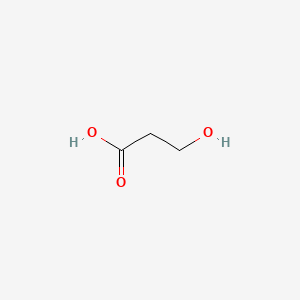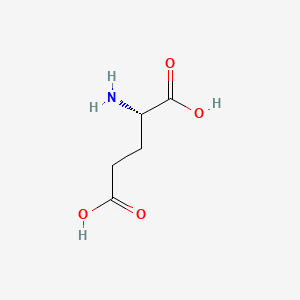| Synonyms |
citric acid; 77-92-9; 2-hydroxypropane-1,2,3-tricarboxylic acid; Citric acid, anhydrous; Aciletten; Anhydrous citric acid; Citro; Citretten; Chemfill; Hydrocerol A; 1,2,3-Propanetricarboxylic acid, 2-hydroxy-; Citric acid anhydrous; Kyselina citronova; 2-hydroxy-1,2,3-propanetricarboxylic acid; 2-Hydroxytricarballylic acid; Caswell No. 221C; 3-Carboxy-3-hydroxypentane-1,5-dioic acid; FEMA No. 2306; 2-Hydroxypropanetricarboxylic acid; FEMA Number 2306; K-Lyte; Kyselina citronova [Czech]; K-Lyte DS; Citric acid,anhydrous; CCRIS 3292; HSDB 911; EPA Pesticide Chemical Code 021801; Citricum acidum; Citric acid monoglyceride; Uro-trainer; AI3-06286; Suby G; NSC 30279; NSC 626579; BRN 0782061; MFCD00011669; NSC-30279; NSC-626579; CHEMBL1261; XF417D3PSL; Kyselina 2-hydroxy-1,2,3-propantrikarbonova [Czech]; Kyselina 2-hydroxy-1,2,3-propantrikarbonova; CHEBI:30769; .beta.-Hydroxytricarballylic acid; citr; NSC30279; NSC626579; NSC-112226; Citric acid bp; Citric acid, 99%; NCGC00090954-03; E330; 2-hydroxy-1,2,3-propanetricarboxyic acid; Citric acid,hydrous; DSSTox_CID_332; E 330; beta-Hydroxytricarballylic acid; Citric acid, hydrous; CITRATE ANION; DSSTox_RID_75520; DSSTox_GSID_20332; 141633-96-7; INS NO.330; Citric acid [USAN:JAN]; CAS-77-92-9; INS-330; 1,3-Propanetricarboxylic acid, 2-hydroxy-; 10402-15-0; EINECS 201-069-1; UNII-XF417D3PSL; E-330; Citraclean; Citronensaeure; Acidum citricum; citric-acid; Anhydrous citrate; 2fwp; 4aci; 4nrm; H3cit; Citric acid, anhydrous [USP:JAN]; Citric Acid,(S); Citric acid (8CI); K-Lyte (Salt/Mix); 1i2s; 1o4l; 1rq2; 1y4a; 2bo4; 2c4v; 2fw6; 4to8; Citraclean (Salt/Mix); Citric acid-[13C6]; Citric Acid (Anhydrous); Spectrum3_001850; WLN: QV1XQVQ1VQ; beta-Hydroxytricarballylate; cid_311; K-Lyte/Cl (Salt/Mix); CITRIC ACID [MI]; K-Lyte DS (Salt/Mix); Acidum citricum monohydrate; bmse000076; HOC(CH2COOH)2COOH; EC 201-069-1; CITRIC ACID [FHFI]; CITRIC ACID [HSDB]; NCIStruc1_000057; NCIStruc2_000099; NCIOpen2_004062; NCIOpen2_004502; Oprea1_502996; BSPBio_003240; Citric acid anhydrous (JAN); 4-03-00-01272 (Beilstein Handbook Reference); Citric Acid, anhydrous, USP; MLS001066346; CITRIC ACID [WHO-DD]; citric acid (Fragrance Grade); Citric acid, anhydrous (USP); CITRICUM ACIDUM [HPUS]; Anhydrous citric acid (JP17); GTPL2478; Citric Acid (Industrial Grade); Citric acid, analytical standard; DTXSID3020332; BDBM14672; Citric acid, p.a., 99.5%; KBio3_002740; 4o61; Citric acid, Electrophoresis Grade; HMS1787N01; HMS2268B04; Pharmakon1600-01300013; ZINC895081; ANHYDROUS CITRIC ACID [II]; ANHYDROUS CITRIC ACID [JAN]; HY-N1428; STR12052; Tox21_113436; Tox21_202405; Tox21_300124; BBL002530; NSC759606; s5761; STK286098; CITRIC ACID,ANHYDROUS [VANDF]; AKOS000119911; ANHYDROUS CITRIC ACID [MART.]; Citric acid, LR, anhydrous, >=99%; 2-hydroxy-1,2,3-propanetricarboxylate; ACIDUM CITRICUM [WHO-IP LATIN]; CS-6965; DB04272; 3-Carboxy-3-hydroxypentane-1,5-dioate; Citric acid, >=99.5%, FCC, FG; Citric acid, ACS reagent, >=99.5%; Citric Acid, anhydrous powder, A.C.S.; 2-Hydroxy-1,3-propanetricarboxylic acid; CITRIC ACID, ANHYDROUS [WHO-IP]; NCGC00090954-01; NCGC00090954-02; NCGC00090954-04; NCGC00090954-05; NCGC00254055-01; NCGC00259954-01; 2-hydroxypropane-1,2,3-tricarboxylicacid; BP-31028; Citric Acid, anhydrous granular, A.C.S.; NCI60_022579; SMR000471840; SBI-0206765.P001; Citric acid, SAJ first grade, >=99.5%; 2-Hydroxy-1,2,3-propane tricarboxylic acid; 2-Hydroxy-1,2,3-propanenetricarboxylic acid; ANHYDROUS CITRIC ACID [USP MONOGRAPH]; C1949; CITRIC ACID, ANHYDROUS [EP IMPURITY]; Citric acid, Vetec(TM) reagent grade, 99%; FT-0623957; FT-0665073; FT-0728530; CITRIC ACID, ANHYDROUS [USP IMPURITY]; CLENPIQ COMPONENT ANHYDROUS CITRIC ACID; EN300-16683; C00158; D00037; AE-562/40806920; ANHYDROUS CITRIC ACID COMPONENT OF CLENPIQ; Citric acid, BioUltra, anhydrous, >=99.5% (T); Q159683; J-520099; 1,2,3-Propanetricarboxylic acid, 2-hydroxy- (9CI); Citric acid, certified reference material, TraceCERT(R); Citric acid, meets USP testing specifications, anhydrous; F2191-0222; 8F5D336A-442D-434A-9FB0-E400FF74E343; Citrate standard for IC, 1000 mg/L, analytical standard; 1,2,3-PROPANETRICARBOXYLIC ACID,2-HYDROXY (CITRIC ACID); Citric acid, United States Pharmacopeia (USP) Reference Standard; CITRIC ACID (CONSTITUENT OF CRANBERRY LIQUID PREPARATION) [DSC]; Citric acid, anhydrous, cell culture tested, plant cell culture tested; Citric acid, anhydrous, European Pharmacopoeia (EP) Reference Standard; Citric acid, anhydrous, free-flowing, Redi-Dri(TM), ACS reagent, >=99.5%; CITRIC ACID (CONSTITUENT OF GARCINIA CAMBOGIA AND GARCINIA INDICA) [DSC]; Citric acid, Anhydrous, Pharmaceutical Secondary Standard; Certified Reference Material; Citric acid, meets analytical specification of Ph. Eur., BP, USP, E330, anhydrous, 99.5-100.5% (based on anhydrous substance)
|
